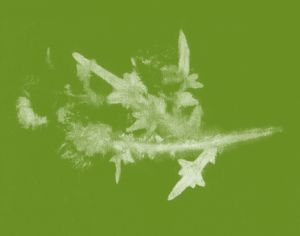With the toughest care,
the most economical tenderness
Justine Youssef
Hawai‘i Triennial 2022
About
With the toughest care, The most economical tenderness is an artwork shipped to you, where you can register to receive a package containing a vial of scented oil.
Distilled by hand using a process which Justine Youssef inherited matrilineally, the scented oil is made of the Blessed Milk Thistle (Silybum marianum), a therapeutic plant native to Lebanon that becomes invasive under certain climates. First introduced by settlers to Maui, Hawai‘i for medicinal use, the plant quickly eluded cultivation and its presence is now considered highly noxious in the Makawao area.
The work is in dialogue with the scent-related artefacts that have been uprooted from Greater Syria and housed at the Shangri La Museum of Islamic Art, Culture & Design in Honolulu. The scent of Blessed Milk Thistle unfolds both a space to interrogate histories of settler relationships to land, and a portal to access traces of the plant’s restorative properties, knowledge of which has become erased through displacement.
With the toughest care, The most economical tenderness was created for Hawai‘i Triennial 2022. The work moves through routes similar to early colonial ships, via ruptured supply chains from Dharug Land in Sydney, Australia, where the plant was harvested and is equally invasive. It takes its name from Judith Wright’s The Eucalypt and the National Character, a poem that co-opts a native plant and likens it to the settler Australian identity.
Registration
Complete this form for an opportunity to receive With the toughest care, The most economical tenderness, an experiment with postal systems in a time of shipping crises.
Registrations will be collected over the duration of Hawai‘i Triennial 2022. As there are a limited number of artworks, recipients will be chosen at random and works will be shipped after the close of the triennial on May 8.
Registrations are limited to residents of Hawai‘i
By clicking submit, you acknowledge that your information will be transferred to Mailchimp for registration processing. Learn more about Mailchimp's privacy practices here.
According to the Marine Exchange of Southern California, there are currently 96 ships waiting to enter the port of Ke Awa O Kou. Record numbers of goods destined for Hawai‘i remain bottlenecked in congested air cargo shipping pipelines. While supply chain delays are attributed to COVID-19, the extractive systems of rapid worldwide shipping have been under stress long before the global pandemic.
This project imagines that the Blessed Milk Thistle, with its anti-inflammatory properties, might ease congestion as its scent travels through backed up supply chains from Dharug Land to across Hawai‘i.
Documentation
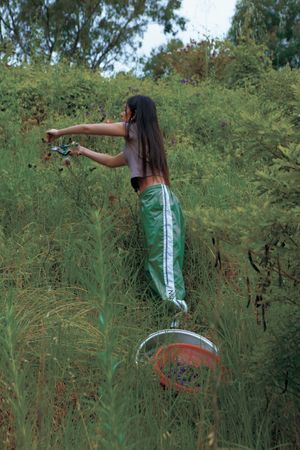
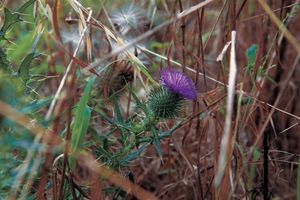
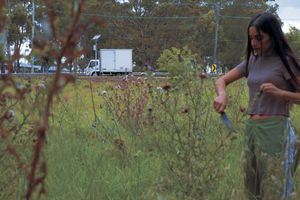
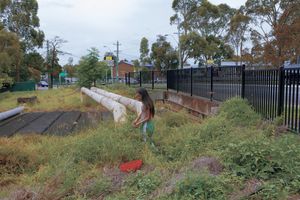
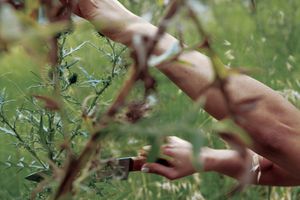
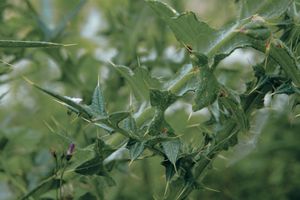
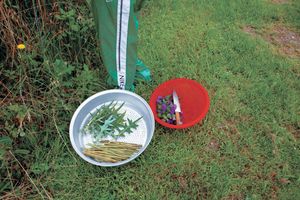
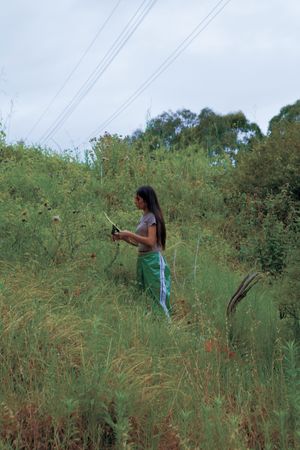
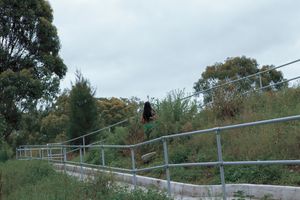
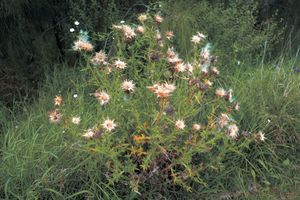
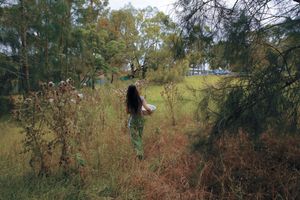
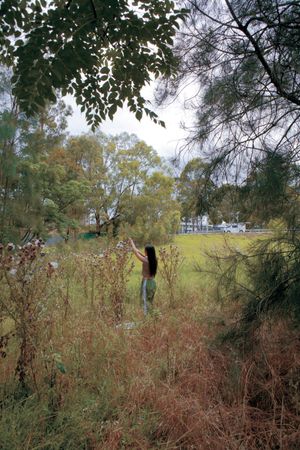
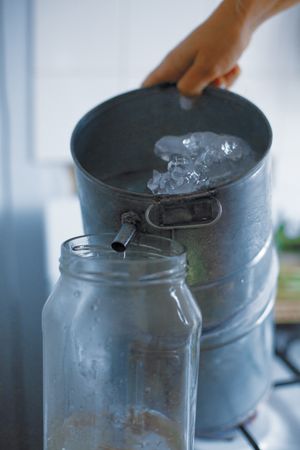
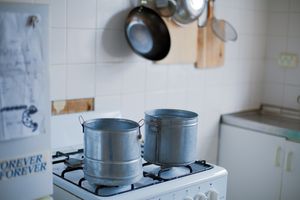
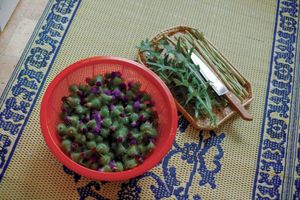
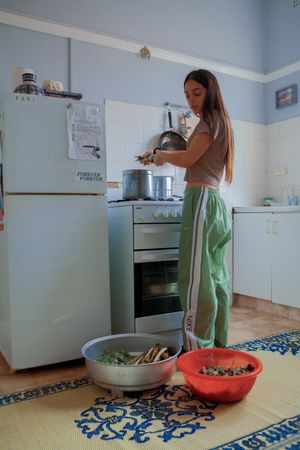
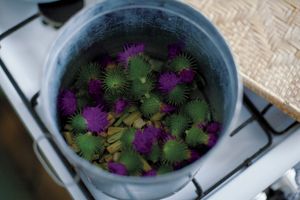
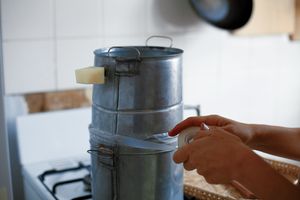
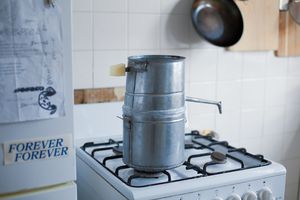
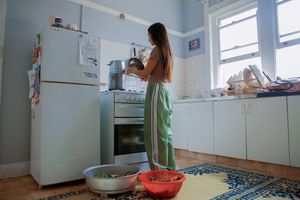
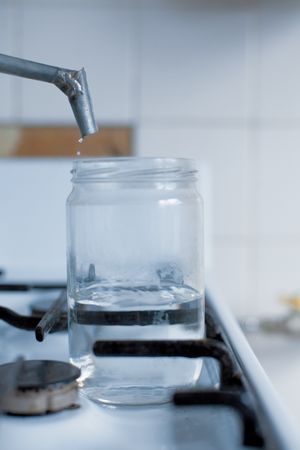
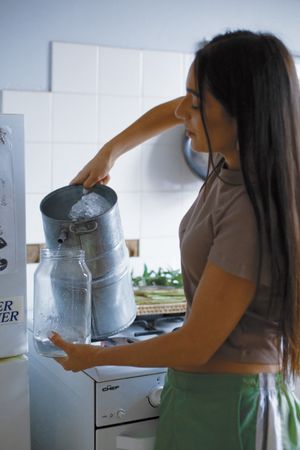
Blessed Milk Thistle
It is impossible for locusts to penetrate the thorns of plants. When swarms invaded Lebanon, Palestine and Syria during World War 1, the Blessed Milk Thistle was one of few species spared. Famine ensued, though the plant sustained those who learned to cut, shave, and boil its roots, stems, and bulbs.
The white veins of the Blessed Milk Thistle were first coloured in Mount Lebanon. A drop of the Virgin Mary’s breast milk leaked onto its leaves, imbuing the plant with anti-inflammatory and regenerative properties. All parts of the plant, from root to seed, became edible and beneficial.
Lactating mothers often ate the plant raw to boost breast milk production. Others boiled its leaves to read their future in the steam, and burned its seeds for protection. So sought after for its medicine, the plant developed prickles along its stems and the flat side of its leaves.
Safer from consumption, it learned to thrive in disturbance, making it impossible to eradicate and noxious when displaced.
Across waters, impenetrable thickets of the Blessed Milk Thistle spread over Maui when the plant was first cultivated by occupiers in the late 1800s. It smothered pastures, and suffocated the cattle consuming its potassium rich leaves, until it was listed as a prohibited species.
Burning the plant, or disturbing the soil within which it grew, only encouraged germination. To kill the plant for good, one had to cut and bag all seed and flower heads at summer’s end, and repeat this for nine years straight.
Bags were buried deep into the site of its displacement in an attempt to halt its growth, though it continued to sprout and spread in secret. It has since become naturalised across the Makawao area—disguised as other benign species, with its medicine no longer accessible.
Biography
Justine Youssef works across mediums from scent to video, having recently exhibited Under the table I learnt how to feed you at the Museum of Contemporary Art, Sydney (2022); Lovesick Puppy with Utp (2021); and All Blessings, All Curses at 4A Centre for Contemporary Asian Art, Sydney (2018). They have exhibited widely, with spaces such as CARPARK, Brisbane (2021); PHOTO 2020, Melbourne (2020); and Salamanca Arts Centre, Hobart (2020). Their work has been published with IchikawaEdward & no more poetry, Cordite Poetry Review, and 4A Papers, among others.
They live across unceded Wangal and Dharug lands in Sydney, Australia. With the toughest care, The most economical tenderness was created for the Hawai‘i Triennial 2022, and marks their first work made in response to a site they have never visited overseas (more).
Acknowledgements
With thanks to Reem Bassous, Alissar Chidiac, Kaili Chun, Dara Gill, Hana Hoogedeure, Hyun Lee, Leslee Michelsen, Tanushri Saha, Alexander Tanazefti, Latai Taumoepeau, Miwako Tezuka, and Donnalyn Xu.
With the toughest care, The most economical tenderness was made across sovereign Dharug and Wangal lands in Sydney, Australia, and an invitation to the work is housed in Waikīkī, Honolulu, with respect and gratitude to their Elders past and present, and to the Elders of the many Countries that this work reaches.
This project has been assisted by the Australia Council for the Arts, its arts funding and advisory body, and through a City of Parramatta Council Community Grant.



Photography by Hyun Lee, design and code by Alexander Tanazefti
